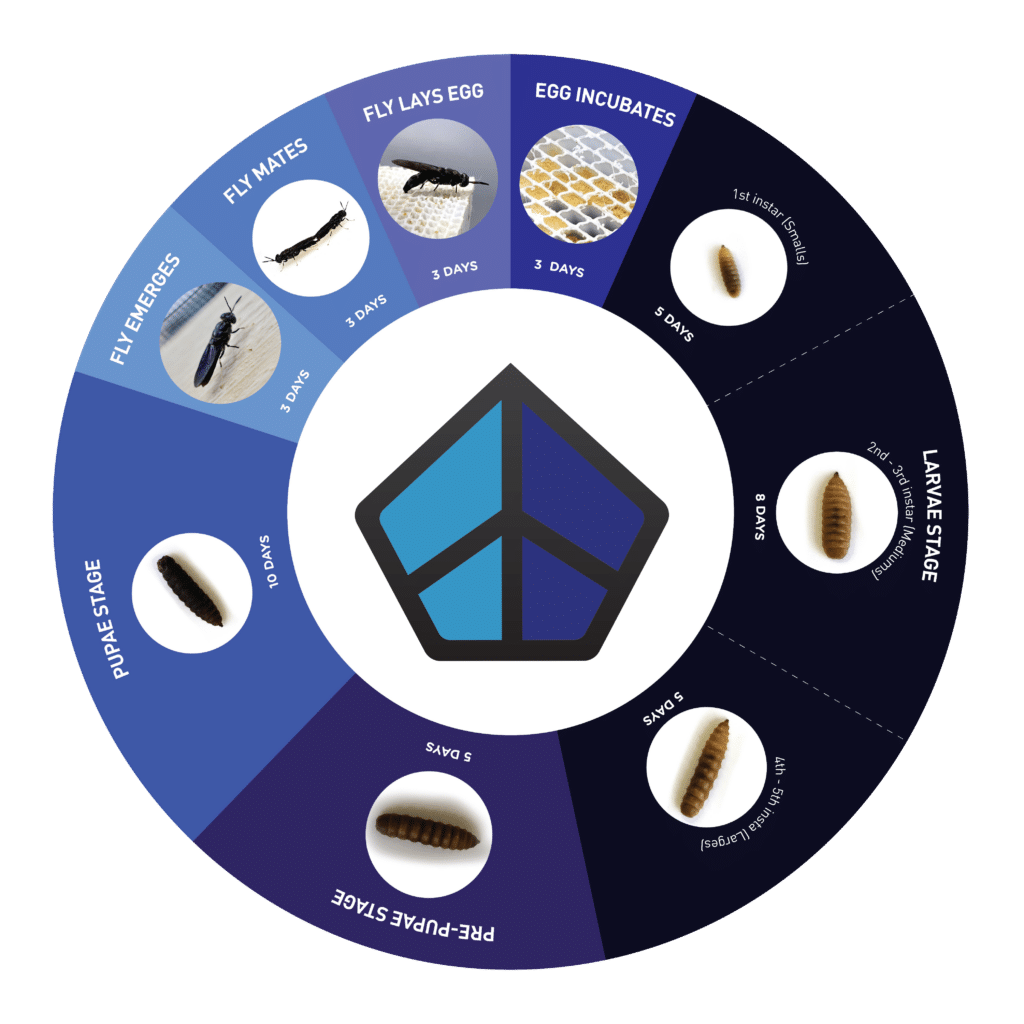A common fly species that originated in South America and was first described scientifically by Charles Linneaus in 1758, the black soldier fly (Hermetia illucens) can now be found in many parts of the world with a temperate climate. Oberland’s founder Greg first noticed this incredible species in his compost pile while he was living in San Diego. In its larval form, BSF have gained attention for their potential to address issues related to our global protein shortage. Oberland utilizes the black soldier fly larvae (BSFL) to produce the lowest carbon-footprint protein available and and upcycles organic wastes and byproducts in our area.
We value the BSFL for their ability to efficiently convert organic materials, such as food scraps and food production byproducts, into nutrient-rich biomass, making them a responsible and viable source of nutrients.
Closing the food loop through organic waste to insect feed makes it achievable to divert this organic waste from landfill and upcycle the nutrient value that can be utilized in various feed industries, including aquaculture, agriculture, and pet food.
One Black Soldier Fly = Multiple Products = Zero Waste

BSFL Address Multiple Planetary Problems
Feeding livestock using conventional methods is unsustainable. Croplands and natural resources are being over-farmed for livestock production. At Oberland, we produce premium quality BSFL for inclusion in livestock and animal feed using less land, less water, and producing fewer emissions than conventional livestock feed.
Food waste is out of hand. Canadians discard 40-60% of the food we grow and produce each year. Oberland’s process utilizes and upcycles this food into a nutrient-rich protein source, diverting thousands of tonnes of food waste from landfill.
Soil health is critically low. Damaged by intensive farming, the industry is using more chemical fertilizers to grow less food. Frass is a natural fertilizer and pesticide with a lower leach rate than conventional fertilizers, making it more resilient to the elements Mother Nature throws at us.
Forage fish stocks are rapidly declining. Wild fish stocks are overfished for use as fishmeal in aquaculture feed. Herring and mackerel stocks are at an all-time low. Oberland’s BSFL protein is an undeniable ingredient in aquafeed, mimicking the natural diet of fish in the wild.
The Life Cycle of the Black Soldier Fly

The black soldier fly goes through four specific stages in as little as four weeks.
- Egg
Hatches as a day 1 larvae, smaller than the period at the end of a sentence - Larvae
The larvae feed for 10-15 days, before harvesting. Once harvested, the larvae can be used as wet or dry protein.
Everything poops, so the larval stage is when frass is produced. This is separated for the wet protein during harvesting. - Pupae
A portion of the larvae are stored to continue their metamorphosis to pre-pupae and pupae. - Fly
The final stage of the BSF life cycle is when the pupae begin to emerge as flies. This is also the shortest stage of the BSFs life. But maybe the most fun for them? The flies live for several days to mate – or sexy times, as we call it – and then die as the next cycle of BSFL begins.
Innovate with Nature: advance soil, plant, and animal health while driving sustainability with BSFL.
